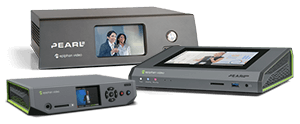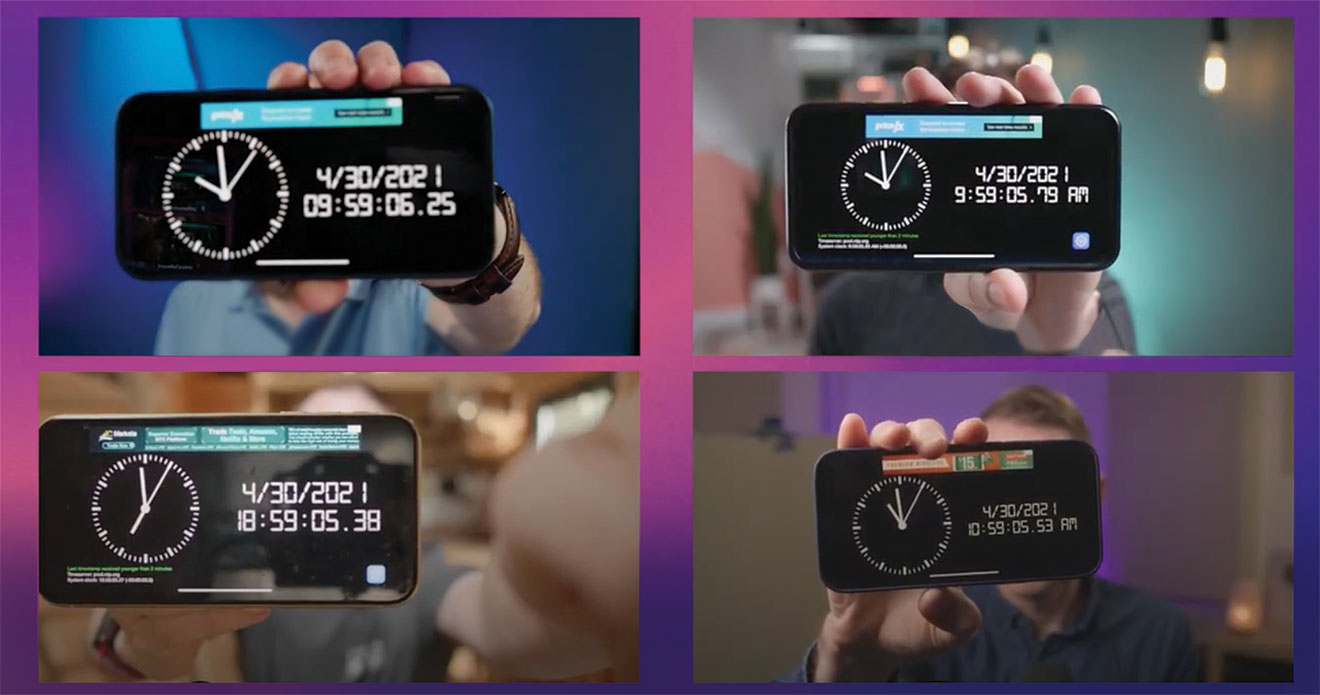Earlier this year, live streaming experts Aaron Parecki, John Barker, Curtis Judd, and PhotoJoseph set out to test the SRT capabilities of their Pearl encoders. The four participants were scattered across the globe, and the goal was to bring them together on a single live stream. Three of the four remote participants contributed an audio and video feed from their local Pearl Nano encoder to the fourth participant’s Pearl-2 production encoder.
What is SRT?
Secure Reliable Transport (SRT) delivers high-quality video and audio with low latency over the unreliable public Internet. More than just low latency, SRT lets you actually control the latency and tune out issues like jitter due to packet loss over poor networks. The ability to deliver high-quality content in near real-time over the Internet gives broadcasters a viable alternative to expensive satellite technology. SRT can also traverse firewalls, minimizing or eliminating the need to engage a network administrator.

- Each participant had a professional camera and microphone connected directly to their Pearl or through a production switcher.
- Because SRT is best suited for one-way video contribution rather than two-way communication, the team used video conferencing (VC) software for real-time communication.
- PhotoJoseph’s Pearl-2 served as the central production hub, receiving all SRT feeds and recording and streaming. During the event, he swapped between layouts on the fly with Pearl-2’s live switching capabilities.
- PhotoJoseph was streaming from Pearl-2 directly to two of his own YouTube channels. An additional RTMP stream was going from Pearl-2 to Aaron’s home gigabit network server for restreaming to the other participants’ YouTube channels.

Raise the bar for remote contribution
Get outstanding quality remote contributions for your production using SRT protocol and Pearl. Learn more about the advantages of SRT support on Pearl and download the complete Pearl SRT application note.
Discover the full potential of SRT
The result: High-quality, low-latency streaming
Sub-second latency
Even though the four participants were thousands of miles apart, they achieved sub-second latency via SRT. Measured with relation to PhotoJoseph, Aaron came in 0.46 seconds behind, Curtis was at 0.72 seconds, and John’s streaming latency was 0.87 seconds. These results are even more impressive when you consider that John was streaming from a remote rural area in Sweden using an unpredictable 4G connection.
Excellent video quality
Multiple viewers noted the excellent audio and video quality of the stream. Some even expressed doubts as to whether the production was live.

Here is that stream
Pearl-2 barely broke a sweat
Even while receiving three 1080p SRT streams, sending three 1080p RTMP streams, and recording locally, Pearl’s CPU load only reached 30 percent. This result surprised producer PhotoJoseph: “Pearl hardware is pretty efficient in this regard. Actually, I am really impressed with that. I expected that to be higher.”
Applications for remote contribution using SRT encoders
Remote contribution kits for live interviews
In this scenario, the producer ships a small production kit consisting of a camera, a microphone, and the contribution encoder to the talent or their team. After the local team or the talent sets up the kit, the producer is ready to stream or record content. PhotoJoseph said, “It’s pretty easy to configure because everything is done through a web platform. You could remote connect into somebody else’s Pearl… and do all the configuration and switching remotely. You could ship out a kit… Tell them to plug it into their network and you take over from there.”
Home streaming studios for corporate executives
For frequent video contributors like executives, a permanent studio in their home or office might make sense. The same low-touch principles would apply: minimal device interaction for the executive, maximum remote control for the producer. As Curtis Judd put it: “Certainly, in education and corporate settings, it makes a lot of sense to use [Pearl Nano] because I am not going to go to an executive’s house and teach them how to do downstream keys and live switching. I want to be able to control all that remotely.”
Assisted live lecture and training production
Both permanent and ad hoc lecture spaces could benefit from a preconfigured hardware encoder. After setting up the encoder, the presenter is free to focus on the presentation while a remote producer assists with the live production.

